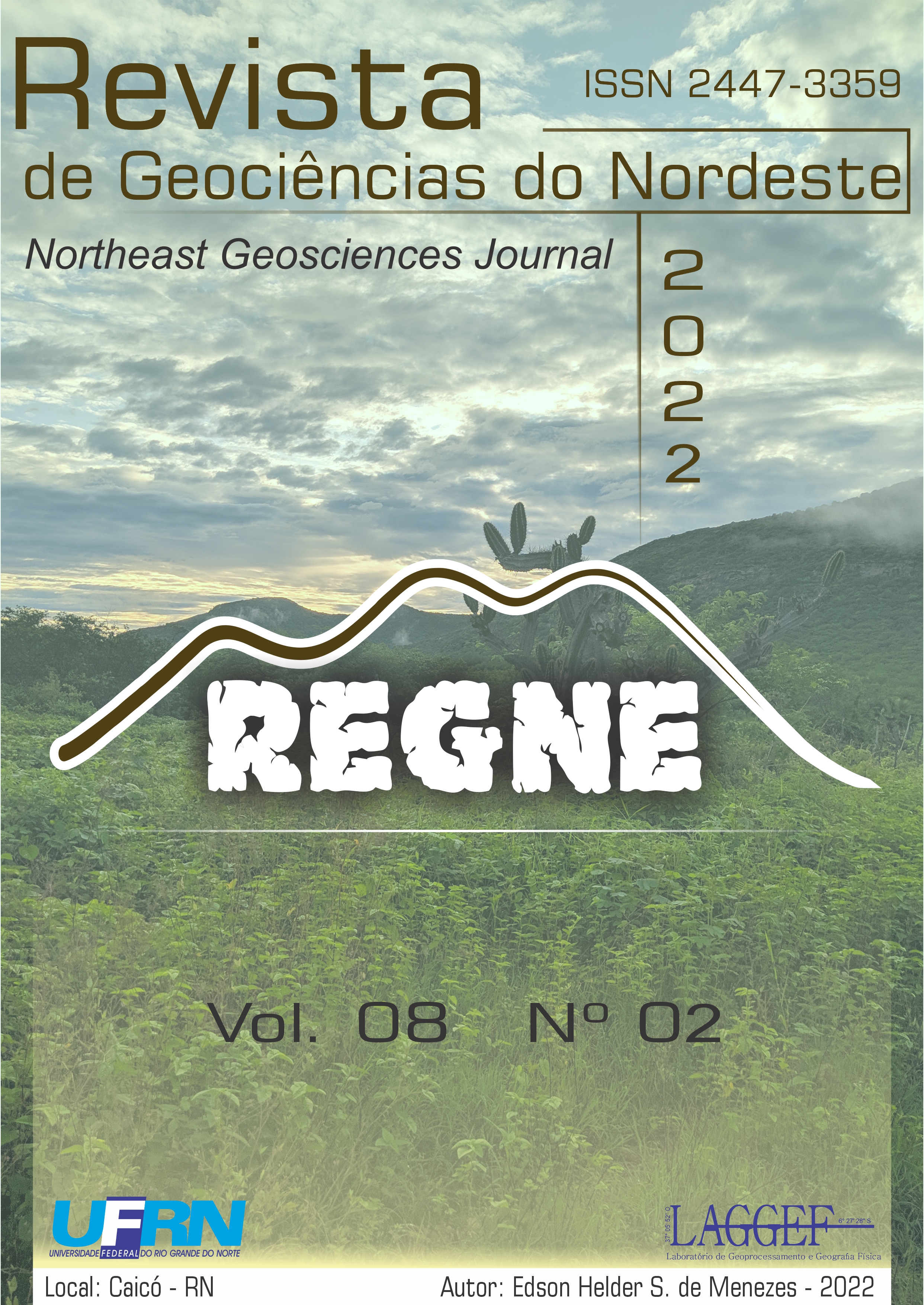Use of spectral indices in the characterization of vegetation cover in the Caatinga region of the Demiarid region of Bahia
DOI:
https://doi.org/10.21680/2447-3359.2022v8n2ID26864Abstract
Given the importance of the Caatinga biome, to raise information that contributes to scientific dissemination, monitoring, conservation of natural resources and planning of environmental policies, the aim was to characterize the vegetation cover and carbon flow of the municipality of Central – Bahia, which presents an extensive area occupied by temporary crops, through the spectral indexes NDVI, SAVI, EVI and CO2Flux, for a dry and a rainy periods of 2020. Satellite images of Sentinel-2, processed in GIS environment, were used. The results showed that the rainy season presented higher VI, mainly for NDVI and SAVI, with values close to 1. The EVI of the rainy season presented lower values than the indexes mentioned, however, still higher than those of the dry period, which presented values predominantly below 0.50, except for the region which houses the Riacho Baixão do Gabriel. The urban area was well discriminated in the images for the rainy season, but not for the dry season. Lower altitude zones presented higher values for VI, while higher areas had lower values. CO2Flux showed that carbon sequestration was more efficient in the rainy season and the correlation between VI showed a strong relationship between them, especially between NDVI and SAVI.
Downloads
Downloads
Published
How to Cite
Issue
Section
License
Copyright (c) 2022 Revista de Geociências do Nordeste

This work is licensed under a Creative Commons Attribution 4.0 International License.


 Português (Brasil)
Português (Brasil) English
English







